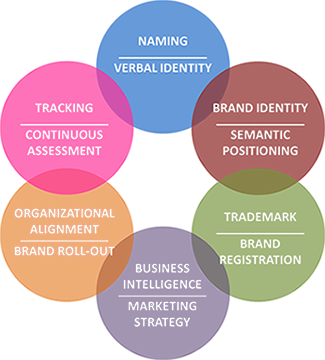Online Branding
In today’s digital age, online branding has become a crucial aspect of any business’s success. With the vast majority of consumers turning to the internet to research products and services, establishing a strong online brand presence has never been more important. But what exactly is online branding? Online branding refers to the process of creating a unique and recognizable brand identity on the internet. It involves strategically positioning your brand, establishing a consistent brand image, and effectively engaging with your target audience. By understanding the importance of online branding and implementing effective strategies, you can dominate your niche and boost your brand authority.
Why is it important?
Online branding plays a pivotal role in the success of your business. By building a strong online brand, you can differentiate yourself from the competition, establish trust with your audience, and attract loyal customers. In today’s crowded marketplace, consumers have countless options to choose from. However, a well-defined online brand sets you apart and gives you a competitive edge. It allows you to communicate your unique value proposition, showcase your expertise, and build credibility. With a strong online brand, you can create a lasting impression on your target audience, increasing brand recognition and driving customer loyalty.

The Key Elements of a Successful Online Branding Strategy
To create a successful online branding strategy, there are several key elements that you need to consider. Firstly, it is essential to identify your target audience and niche. By understanding who your ideal customers are and what they are looking for, you can tailor your branding efforts to resonate with them. Building a strong brand identity is also crucial. This involves defining your brand’s values, mission, and personality. Your brand identity should be authentic, consistent, and aligned with your target audience’s needs and desires.
Once you have established your brand identity, it is important to create a consistent brand image across all online channels. This means using consistent branding elements such as logos, color schemes, and fonts on your website, social media profiles, and other online platforms. Consistency helps to reinforce your brand’s message and make it more memorable to your audience.

Identifying Your Target Audience and Niche
Before you can start building your online brand, it is important to identify your target audience and niche. Your target audience is the group of people who are most likely to be interested in your products or services. They are the ones who will benefit the most from what you have to offer. By understanding their needs, preferences, and pain points, you can tailor your branding efforts to resonate with them. This will help you attract the right customers and build a loyal following.
To identify your target audience, start by conducting market research. Look at your existing customer base and analyze their demographics, psychographics, and buying behavior. This will give you insights into who your ideal customers are and what motivates them to make a purchase. Additionally, use tools like Google Analytics and social media insights to gather data on your website visitors and social media followers. This data will provide valuable information about their interests, online behavior, and preferences.
Once you have identified your target audience, it is important to narrow down your niche. A niche is a specific segment of the market that you are targeting. By focusing on a niche, you can position yourself as an expert in that area and differentiate yourself from the competition. To choose a niche, consider your unique strengths, expertise, and passions. Look for gaps in the market that you can fill and areas where you can provide exceptional value to your target audience.
Building a Strong Brand Identity Online
Building a strong brand identity is essential for online branding success. Your brand identity is what sets you apart from your competitors and helps you connect with your target audience on a deeper level. It reflects your brand’s personality, values, and mission. By establishing a strong brand identity, you can build trust, credibility, and loyalty among your audience.
To build a strong brand identity online, start by defining your brand’s core values. What does your brand stand for? What are the principles that guide your business? Your core values should be authentic, meaningful, and aligned with your target audience’s values. They should reflect what your brand represents and what you want to be known for.

Next, define your brand’s personality. Is your brand playful and lighthearted, or serious and professional? Are you innovative and cutting-edge, or traditional and reliable? Your brand personality should be consistent across all your online channels and communication. It should resonate with your target audience and evoke the desired emotions and reactions.
Finally, articulate your brand’s mission and purpose. What is the bigger vision behind your brand? What problem are you solving for your target audience? Your mission should be clear, concise, and inspiring. It should communicate the value that you bring to your customers and the impact that you want to make in the world.
Online Branding Tools and Resources
To support your online branding efforts, there are various tools and resources available that can help you streamline your processes and optimize your results. Here are some essential online branding tools and resources:
- Brandwatch: A social listening tool that allows you to monitor mentions of your brand and industry keywords across social media platforms and the web.
- Google Analytics: A web analytics tool that provides insights into your website traffic, user behavior, and conversion rates.
- Hootsuite: A social media management platform that allows you to schedule and manage your social media posts across multiple platforms from one dashboard.
- Mailchimp: An email marketing platform that enables you to create and send branded emails, automate campaigns, and track performance metrics.
- HubSpot: A comprehensive inbound marketing platform that offers tools for content creation, lead generation, and customer relationship management.
These are just a few examples of the many tools and resources available to support your online branding efforts. Explore different options and choose the ones that align with your brand objectives and budget.





